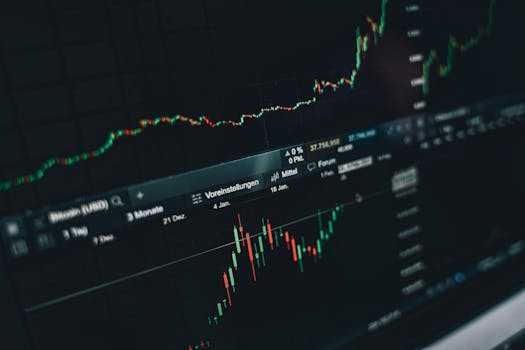
**
Global Headwinds Dampen Investment Flows: Spread Compression and Geopolitical Uncertainty
The global investment landscape is experiencing a significant shift, with active investment flows showing signs of slowing down. This deceleration is primarily attributed to a confluence of factors, including the compression of credit spreads, rising geopolitical risks, and persistent inflationary pressures. Understanding these interconnected dynamics is crucial for investors navigating the current market complexities. This analysis delves into the key drivers behind the subdued active flows and explores their potential implications for the future.
The Compression of Credit Spreads: A Key Factor
One of the most prominent factors contributing to the slowdown in active investment is the compression of credit spreads. Credit spreads, which represent the difference in yield between a corporate bond and a comparable government bond, have been narrowing significantly in recent months. This narrowing reflects a decreased perception of risk in the market, potentially driven by factors such as quantitative easing (QE) and the perceived stability of certain sectors.
However, this compression poses a challenge for active investors who rely on identifying mispriced assets to generate alpha. With spreads narrowing, the potential returns from exploiting these discrepancies are diminished. This makes it harder for active managers to outperform passive strategies, leading to reduced active flows as investors potentially shift towards lower-cost index funds and ETFs.
Impact on Different Asset Classes:
- Fixed Income: The narrowing of credit spreads directly impacts the returns of active fixed-income strategies. Bond picking becomes less lucrative as the opportunities for outsized returns dwindle.
- Equities: While not directly affected by credit spreads in the same way, the overall market sentiment influenced by spread compression can impact equity valuations and trading strategies.
- Alternative Investments: Hedge funds and other alternative investment strategies may also experience reduced opportunities due to the overall shift towards lower-risk assets driven by compressed spreads.
Geopolitical Risks and Market Volatility
Geopolitical instability continues to cast a long shadow over global markets. The ongoing war in Ukraine, escalating tensions in the Taiwan Strait, and broader concerns about global energy security all contribute to heightened market volatility. This uncertainty makes it difficult for investors to predict future market movements, increasing the risk associated with active investment strategies.
Key Geopolitical Events Impacting Investment Decisions:
- Ukraine Conflict: The ongoing war has spurred energy price hikes and disrupted supply chains, contributing to global inflation and economic uncertainty.
- Taiwan Tensions: Rising tensions between China and Taiwan pose significant risks to global trade and technology supply chains.
- Inflationary Pressures: Persistently high inflation rates globally are forcing central banks to raise interest rates, creating a more challenging environment for active investment.
Inflationary Pressures and Monetary Policy
Central banks around the world are grappling with stubbornly high inflation. In response, they've implemented aggressive monetary tightening policies, raising interest rates to curb inflation. While necessary to control inflation, these policies have a ripple effect on investment flows.
Higher interest rates increase borrowing costs for businesses and consumers, potentially slowing down economic growth. This uncertainty further reduces investors' appetite for risk, leading to decreased active investing and a potential flight to safety.
Monetary Policy's Influence on Active Investing:
- Higher Interest Rates: Increased borrowing costs reduce corporate profitability and investment, leading to subdued market activity.
- Economic Slowdown: Central bank actions aimed at curbing inflation can inadvertently trigger an economic slowdown, negatively impacting asset values.
- Increased Risk Aversion: Uncertainty about economic growth encourages investors to adopt a more risk-averse approach, favoring less volatile assets.
The Rise of Passive Investing
The confluence of factors discussed above – compressed spreads, geopolitical risks, and inflationary pressures – has inadvertently boosted the appeal of passive investment strategies. Passive strategies, such as index funds and ETFs, aim to replicate the performance of a specific market index, eliminating the need for active stock picking or bond selection.
The reduced potential for outperformance from active management, combined with lower fees associated with passive investments, has led to a significant increase in their popularity. This shift further contributes to the deceleration of active investment flows.
Looking Ahead: Navigating the Changing Landscape
The current environment presents a complex challenge for active investors. While opportunities may still exist, they are likely to be fewer and require more sophisticated analysis. Investors need to carefully assess their risk tolerance and investment horizon, and consider diversification across different asset classes.
For active managers, adapting to the changing market dynamics will be crucial. This may involve focusing on niche markets, employing more sophisticated analytical techniques, or incorporating ESG (Environmental, Social, and Governance) factors into their investment strategies.
Conclusion:
The slowdown in active investment flows reflects a complex interplay of global factors. Compressed credit spreads, geopolitical uncertainties, and persistent inflationary pressures are all contributing to a more challenging environment for active managers. While passive investing is gaining momentum, opportunities for astute active managers still exist, requiring a nimble and adaptive approach to navigating this ever-evolving landscape. By understanding these dynamics, investors can make more informed decisions and navigate the complexities of the current market.




















